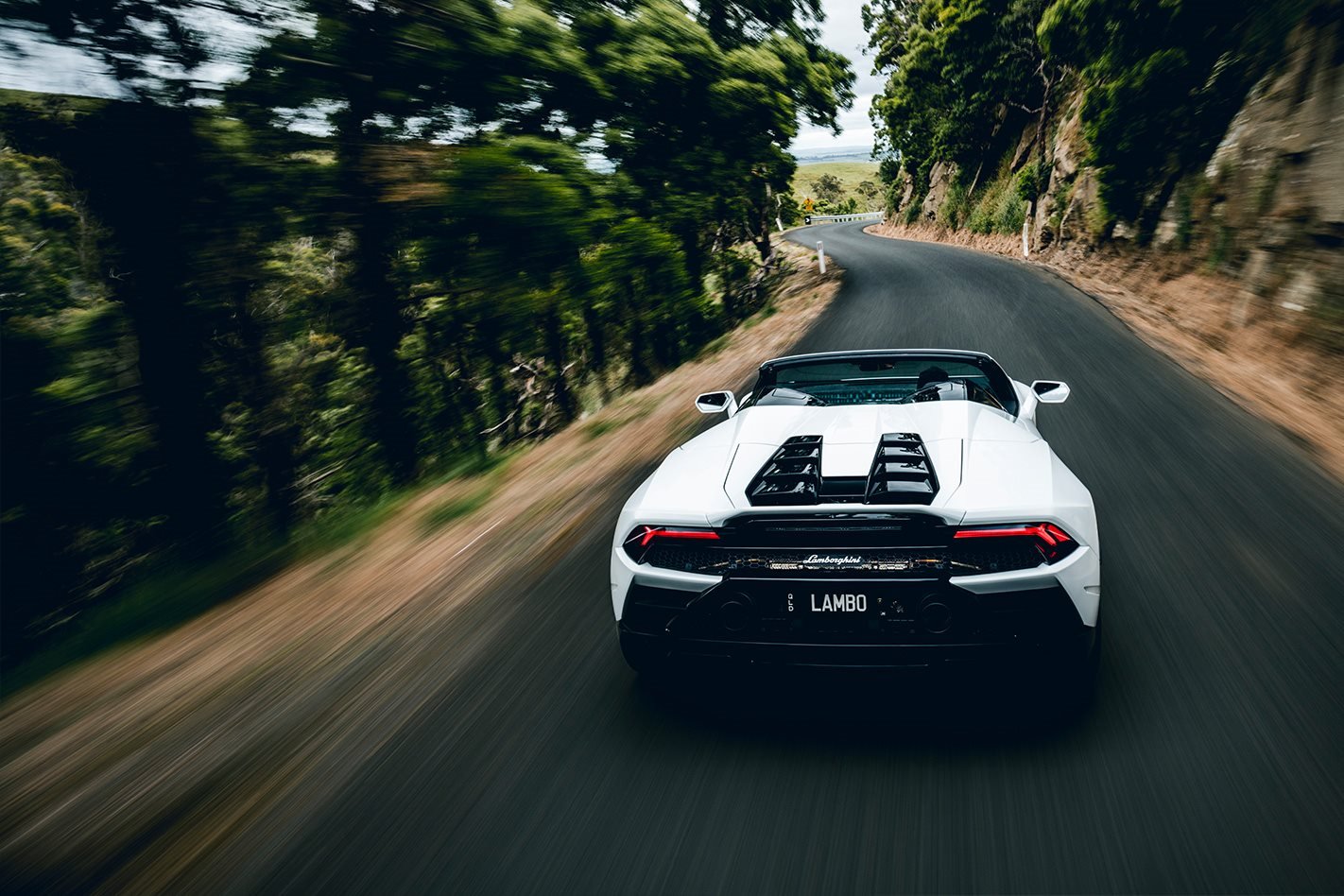One of the more unusual interests a motoring journalist must possess is a deep love of Google maps. Spending hours searching for undiscovered squiggly lines is a joy, not a chore… and it’s only the start of the process.
Once a promising section of road has been identified, a switch to satellite is required to ensure it’s tarmac, as often the little Google car hasn’t transversed some of the more rural roads – as an aside, how do you get that job?
And can I use a Ford Focus RS or Porsche 911 GT3? Then it’s down to street view, if available, to check the scenery – the best road in the world is no good if it looks like a supermarket carpark.

The point is, finding good roads doesn’t just happen. Except, occasionally, it does, and as fun as Google is, it can’t compare to the excitement of organic discovery.
You can’t plan these moments, they have to come out of nowhere and as such are quite rare.
Nevertheless, while testing a road recently that was intended purely for transport suddenly showed promise, hiding in plain sight within a stone’s throw of more regular routes.
With each kilometre, it shed layers like a winding black onion until it became clear that we had to feature this road, presumably behind the wheel of something epic.
An engine in the middle is a good start, particularly when it features 10 naturally aspirated cylinders.
Feed the prodigious power to the rear wheels only, chop the roof off and include an Italian heritage and it’s difficult to think of a more exotic cocktail.
This neatly describes the Lamborghini Huracan EVO RWD Spyder, which rockets from 0-100km/h in a claimed 3.5sec – or about as long as it takes to say its name – and barrels through 200km/h in just 9.6ec on its way to a 324km/h top speed.

Nestled within this wild white wedge is the latest Lamborghini/Audi 5.2-litre V10, which in this guise develops 449kW at 8000rpm and 560Nm at 6500rpm.
This is 21kW/40Nm down on the all-wheel-drive EVO but matches the outputs of the first-gen Huracan LP610-4. It’s also 52kW/20Nm more than Audi deems sensible to send through the rear wheels of its R8 V10 RWD.
Ditching the front-drive gubbins saves 43kg but the reinforcement required to stop the open chassis twisting like warm liquorice adds 120kg.
A claimed weight figure of 1509kg seems reasonable, but Lamborghini quotes its figures for a dry vehicle, so add fluids, fuel and a driver and you’re looking at around 1750kg or more.
As such it’s 0.2sec slower than its hardtop sibling to 100km/h and 0.3sec slower to 200km/h – if you can sense that, you have a more finely calibrated drag strip derriere than I.

Outright performance is more or less irrelevant for the first part of our journey, a 60min schlep down the M420 freeway south-east of Melbourne towards Phillip Island.
The Huracan EVO is extremely easy to drive – leave the ANIMA switch on the base of the steering wheel in Strada (Road) and the engine is subdued, the steering light and the gearbox slips from cog to cog smoothly of its own accord – but in Spyder guise it isn’t quite so relaxing to be in.
Road and wind noise is substantial, rearward vision a challenge and despite the $12,970 inclusion of adaptive dampers, which does include the very handy nose-lift system, the low-speed ride is pretty terse.
Now’s probably a good time to cover off the thorny issue of the options. All up, they add $90,550 to the base price of $422,606.
Believe it or not, the prevailing wisdom for Aussie exotics tends to be to strip out as much standard equipment as possible; this keeps the base price down and allows each customer to spec their car – a blank canvas, if you like.
There’s method to the madness, but you are then left paying $6480 for Apple CarPlay, $1680 for cruise control, $3600 for parking sensors and $3850 for a rear-view camera.
For that amount of money you could buy a whole Kia Picanto (with change) which includes every such feature as standard.

The rest of the box-ticking is down to personalisation and Lamborghini’s Ad Personam program makes the sky the limit.
The big ticket items are the $13,690 sports seats (add another $4800 for unicolour leather and $1800 for Lamborghini shields on the headrests), the $8410 ‘Aesir’ rims and $10,080 of high gloss black exterior trim.
To its credit, Lamborghini has attempted to simplify the process: buyers can add the Driver and Lifestyle Packs at a cost of $10,090 for both which includes the magnetorheological adaptive suspension with lift kit, carbon brakes, transparent engine cover, alarm, front and rear parking sensors and cheaper rim upgrade, options that would normally cost more than $50,000 if purchased separately.
Enough money talk; let’s drive. Having made your way down the M420, fuel up at Grantville, then continue another four kilometres down the freeway and turn left onto Dalyston-Glen Forbes Road.
This connects, you guessed it, the blink-and-you’ll-miss-it town of Glen Forbes to Dalyston on the Bass Highway, within smell if not sight of Bass Strait. It’s a short road, just 20km in total, but it packs a hell of a lot in.
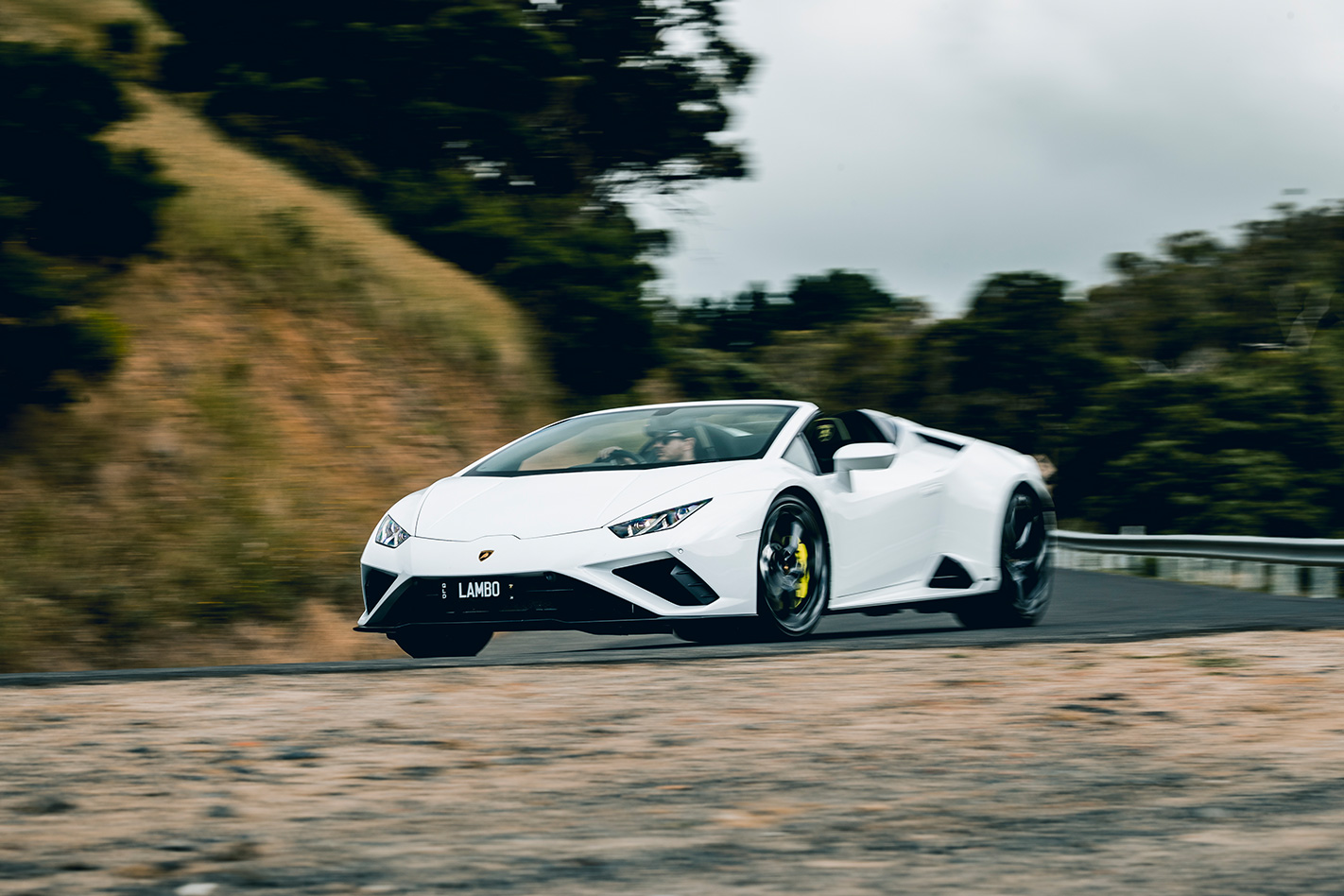
The first corner of note is a nicely cambered right-hander, taken in third or fourth gear, a grandstand of curious cows on the outside scattering nervously in response to the downshift bark of this Raging Bull.
I’m still in Strada, the engine muted and the suspension as relaxed as it’s possible to make it but as we cross the bridge over the Bass River a click to Sport adds weight to the steering and plenty of decibels to the exhaust note.
The V10’s peaks – power at 8000rpm, torque at 6500rpm – suggest a highly-strung engine but it’s still possible to hum along at an impressive pace without troubling the tacho’s upper reaches.
Make sure you keep left and ignore the Eden Road turn-off, though if you do take a wrong turn a cracking set of corners just past Woolamai is a decent consolation prize.
Our chosen route immediately narrows dramatically, the road hugging the hillside like a giant, bumpy black snake.
The roof is down now, the process taking 17sec and operable at up to 50km/h, and a full-throttle blast completely overwhelms my senses.

The Spyder’s 0.3sec deficit to the Coupe in the 0-200km/h sprint has never felt more irrelevant. Your brain doesn’t know what to concentrate on: your eyes want to focus on the rapidly blurring scenery, but your ears are distracted by the shrieking engine and the wind is swirling within the cabin.
Thankfully the car is more composed. On this lumpen tarmac the firm low-speed ride makes sense, the suspension controlling the body beautifully, absorbing bumps rather than falling into and jumping out of them.
The ESP isn’t as happy. Lamborghini developed P-TCS (Performance Traction Control System) for the Huracan EVO RWD models, a smarter traction control (it claims) that instead of harshly cutting torque when the rear wheels lose traction, continues to deliver it even while the car is recovering from a slide.
In Strada, P-TCS is as cautious as an overprotective parent, stepping in before the slightest hint of rear slip is allowed to develop. In Sport, Lamborghini claims “the rear wheels can slide and skate during acceleration, for easy drifting fun without compromising safety.”
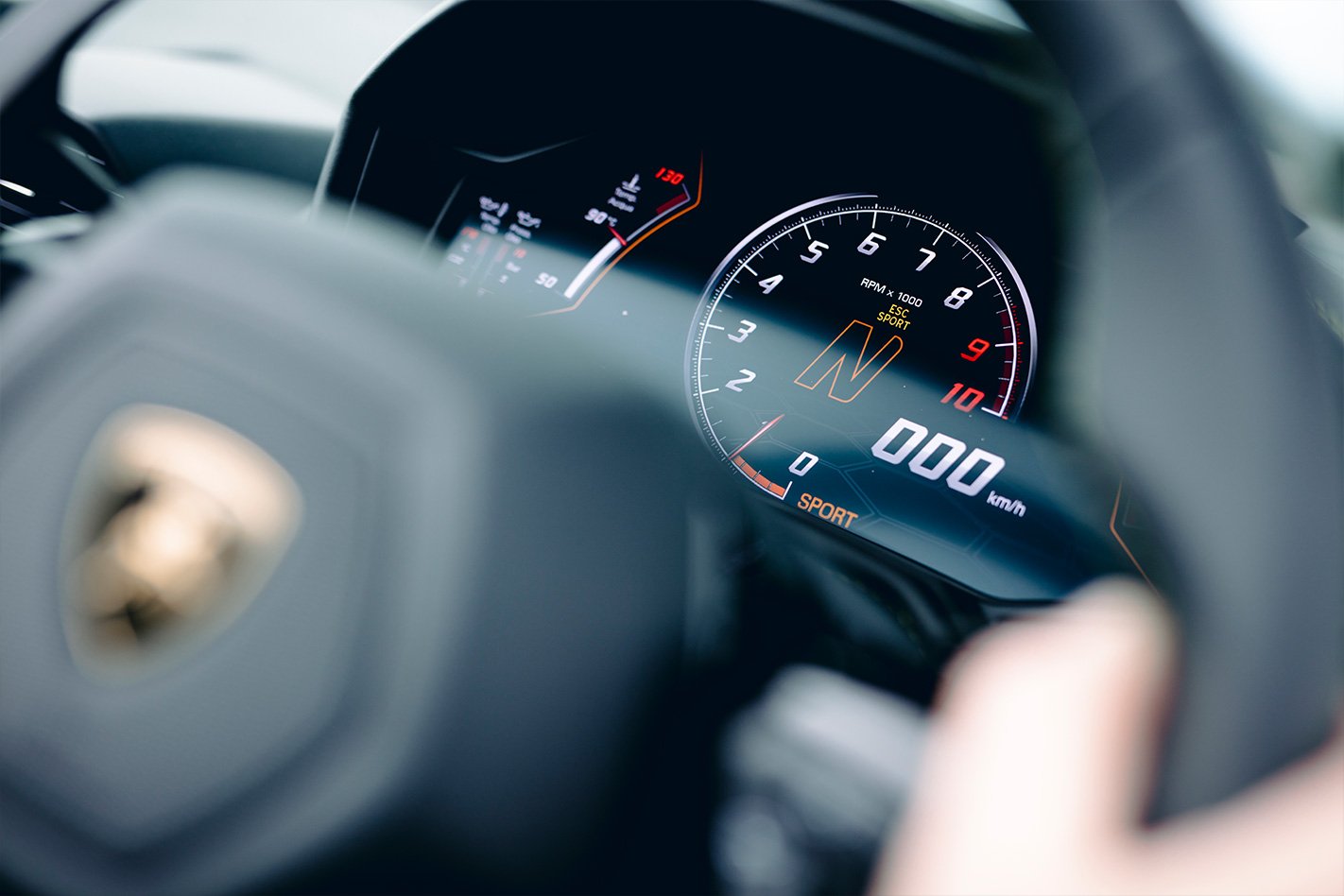
Sounds promising, but in reality P-TCS is still quite conservative, feeling to loosen the reins slightly at higher speeds, but it doesn’t offer the latitude of Ferrari’s Slide Slip Control or Audi’s ESP Sport.
Of course, with more than 600hp being fed to the rear wheels of a mid-engine supercar, that might be a good thing.
Experienced drivers will click ANIMA up once more to Corsa. This illuminates ‘ESP Sport’ whether you’ve touched the button or not, but while it doesn’t offer any more latitude than Sport – P-TCS is trying to make you go quickly in this mode and that means keeping things tidy – it does allow the option of deactivating the electronics completely.
This is something we’d only recommend for the racetrack, but let’s just say the Huracan EVO RWD Spyder is friendlier than you’d expect when the rear tyres have broken free.
Corsa also ramps up the aggression further, to ‘Great White Shark with a toothache’ levels. It’s a frenetic experience, so best to pull up and rest for a moment, a roadside layby on a left-hand hairpin offering a beautiful view down the valley to the coast and the mouth of the Bass River.
Unfortunately, our efforts to stop and take a breath are stymied by the fetid stench of a decomposing kangaroo, which explains the odd rank whiff that floated in through the Huracan’s open top. Time to get out of here.
The road immediately changes dramatically once again, the open farmland making way for a narrow gorge.
A rock face stands ominously on one side, the unimaginatively titled Gorge Creek hidden beneath the undergrowth on the other. This stretch was built by soldiers returned from the war between 1919-1921.
Drilling for blasting was done by two men, one holding the drill while the other smashed it with a sledgehammer, the spoil moved using picks, shovels and wheelbarrows. It must have been monstrously hard work, though in the context of what they’d just endured in Europe, probably seemed like a walk in the park.
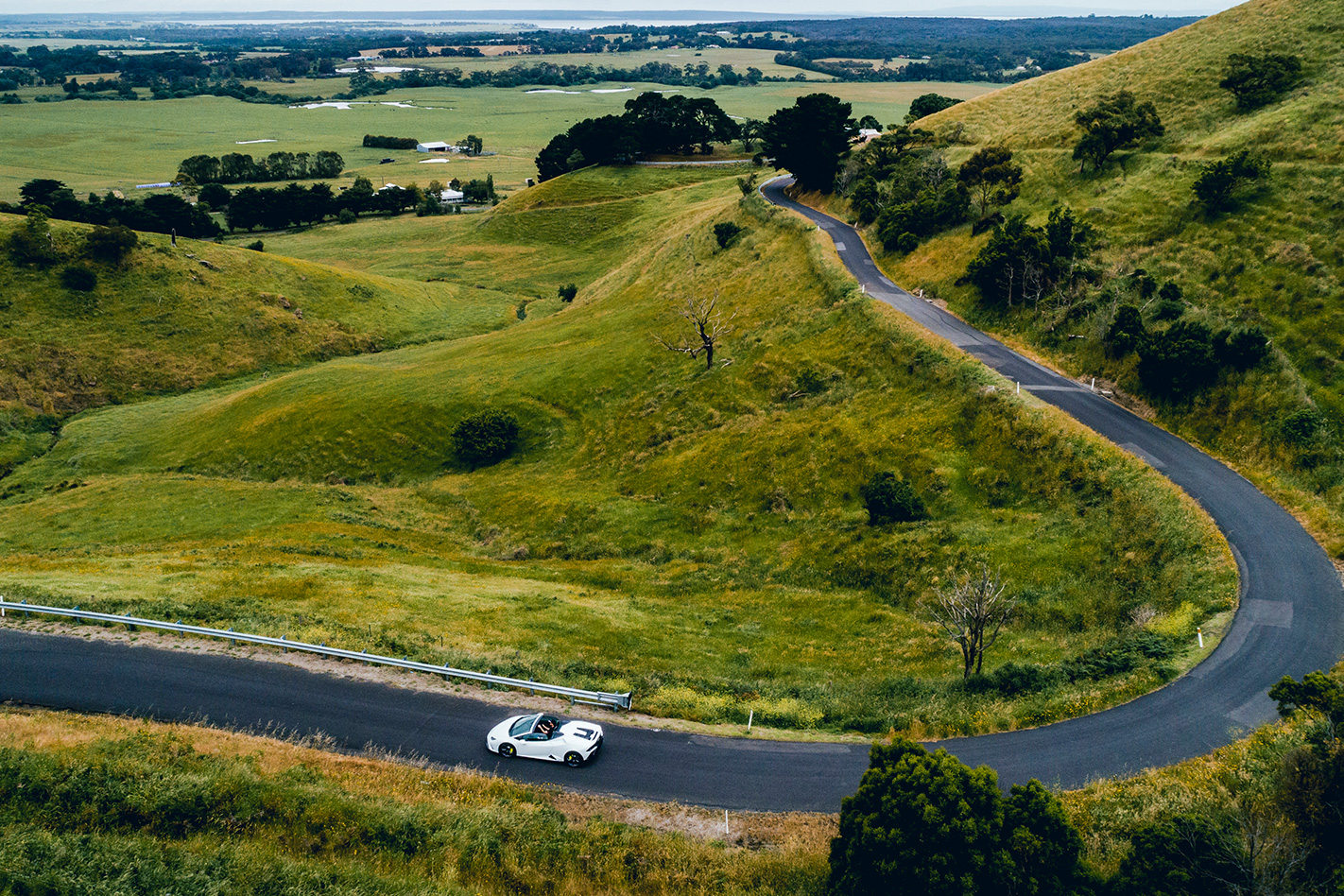
It’s difficult to imagine a better environment for a V10 supercar. The proximity of the rock wall completely changes the acoustics, the sound becoming mellower but thicker, almost like you could reach out and grab a handful.
In Corsa mode the Huracan is ridiculously loud, the loudest road car I’ve ever driven. Its song carries for kilometres and it’s a good thing those brave diggers are no longer working here, as the Lambo’s fierce machine-gun cracks on the over-run would have them diving into the nearest roadside ditch.
It’s more than a little ostentatious, but that’s the Lamborghini way.
There are a couple of quick left-right combinations in this section, the road contorting to ensure a favourable camber.
The Huracan is unfazed, capable of carrying massive speed, but you do notice the relative lack of body rigidity in the moments when the loads are at their most severe.
Funnily enough, it’s most noticeable in daily driving, the odd creak through a driveway or over a speed bump; during hard use it manifests as the odd shimmy through the body, the extra 120kg of reinforcement noticeable in quick direction changes when the car doesn’t react with the immediacy you expect.
Remember, the Huracan isn’t built around a full carbon tub, but a mixture of aluminium and composites structures.
It doesn’t hurt its outright pace, though. Beyond the gorge, the corners become quicker and the straights longer and the manner with which the Huracan accrues speed is ridiculous.
Modern supercars really are absurd; the EVO RWD Spyder is the least potent Lamborghini sports car and more than 74kW down on rivals from McLaren and Ferrari, yet it’s still so, so fast.
I flick the ANIMA switch back to Sport; in Corsa the gearshifts have an engineered-in jolt that’s theatrical but soon becomes tiresome, whereas Sport auto-upshifts at redline, even in manual, but the shifts themselves are utterly seamless.
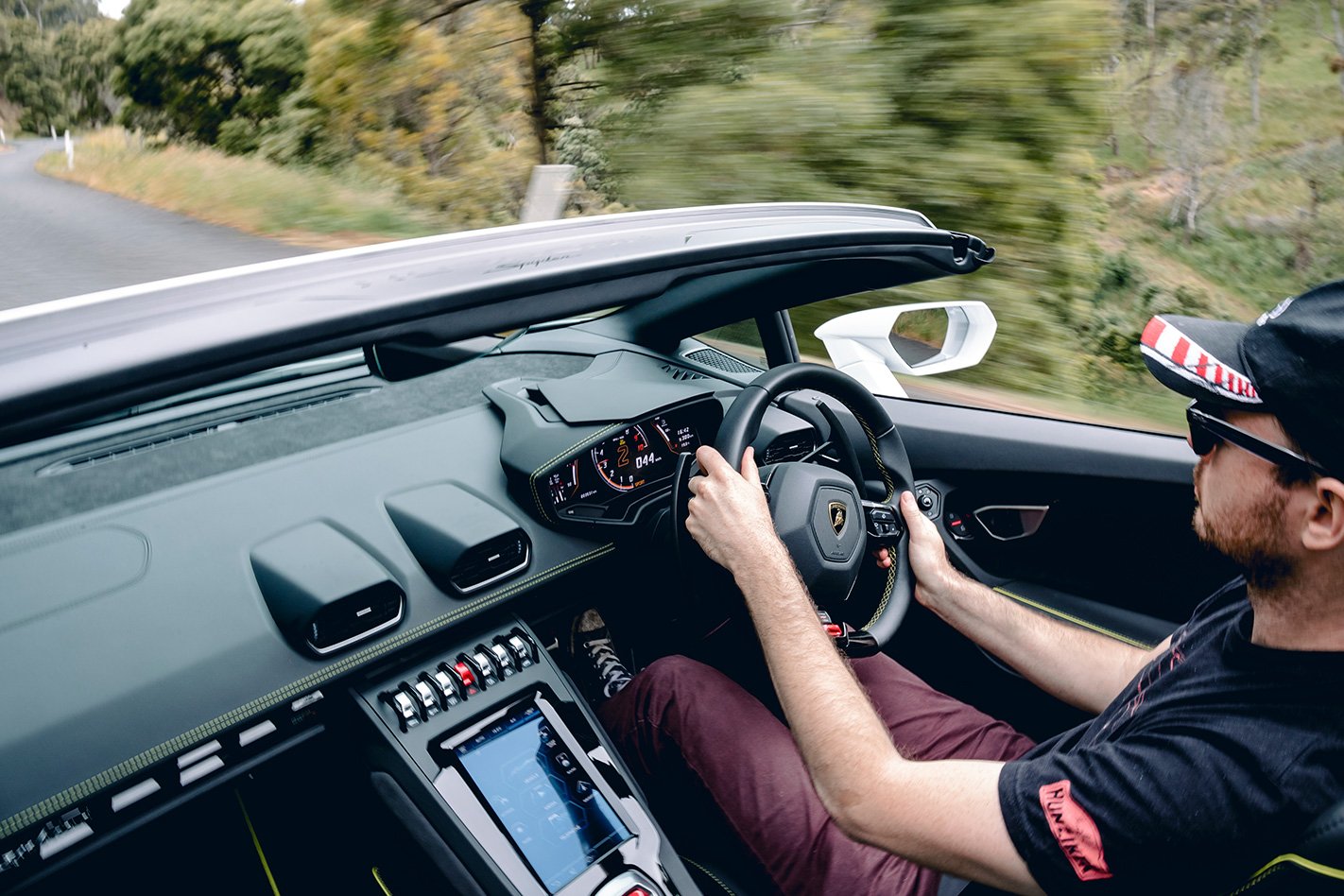
Since turning off the freeway we’ve been steadily climbing but a tight left-hander marks the summit, your reward a breathtaking view and a stunning series of bends.
Directly ahead of you, yet almost 1.5km distant, is the road. It encircles an enormous valley, completing a 270-degree arc before disappearing.
The vista stretches more than 10km down to the sea over green hills – it’s a beautiful place. Sightseeing tends to take a back seat when there’s a deserted, twisting road in front of your Lamborghini, however.
It’s a brilliant stretch of road: the surface is smooth, though certain apexes have a light dusting of gravel from farmers taking WRC lines, and a varied mix of corners come thick and fast.
At maximum attack this EVO RWD Spyder is a phenomenal experience. The ferocity of the acceleration is more than matched by the deceleration, the standard steel brakes equal to the task, the gearbox instantly answering your downshift requests.
Grip levels are incredible, the traction such that the electronics remain asleep with no bumps to worry about.
The 40:60 weight distribution requires some managing; accelerate too early and the nose will lift, pushing the front tyres wide, but exercise a degree of patience and this Lamborghini is devastatingly effective.
Its greatest dynamic shortcoming is the steering. There’s an annoying elasticity to the way it feels, which only worsens at speed and the sportier drive modes add extra weight.
The front end it controls is sharp enough that you rarely have to worry about the level of front grip, but the wheel does tend to go mute, especially when winding off lock on corner exit.
A quick run through a wooded valley and the Dalyston-Glen Forbes road has given its best. From here it’s an enjoyable 100km/h cruise through farmland to the town of Dalyston, but with apologies to its inhabitants, we’re continuing another five minutes along the coast to the seaside hamlet of Kilcunda to reflect on driving Lamborghini’s latest supercar offering.

It hasn’t been a particularly long drive – from fill-up at Grantville to watching the waves at Kilcunda takes only around half an hour – but in the process there’s been almost every sort of corner, surface and scenery imaginable: bumps, hairpins, sweepers, canyons, farmland, coast, the works.
The Huracan EVO RWD Spyder has grown on me. Initially, it felt a little more style than substance, but its exotic looks, searing pace, rear-drive dynamics and outrageous noise make it a desirable supercar – if you don’t mind being looked at.
I wonder if you can mount Google Streetview equipment on it?


